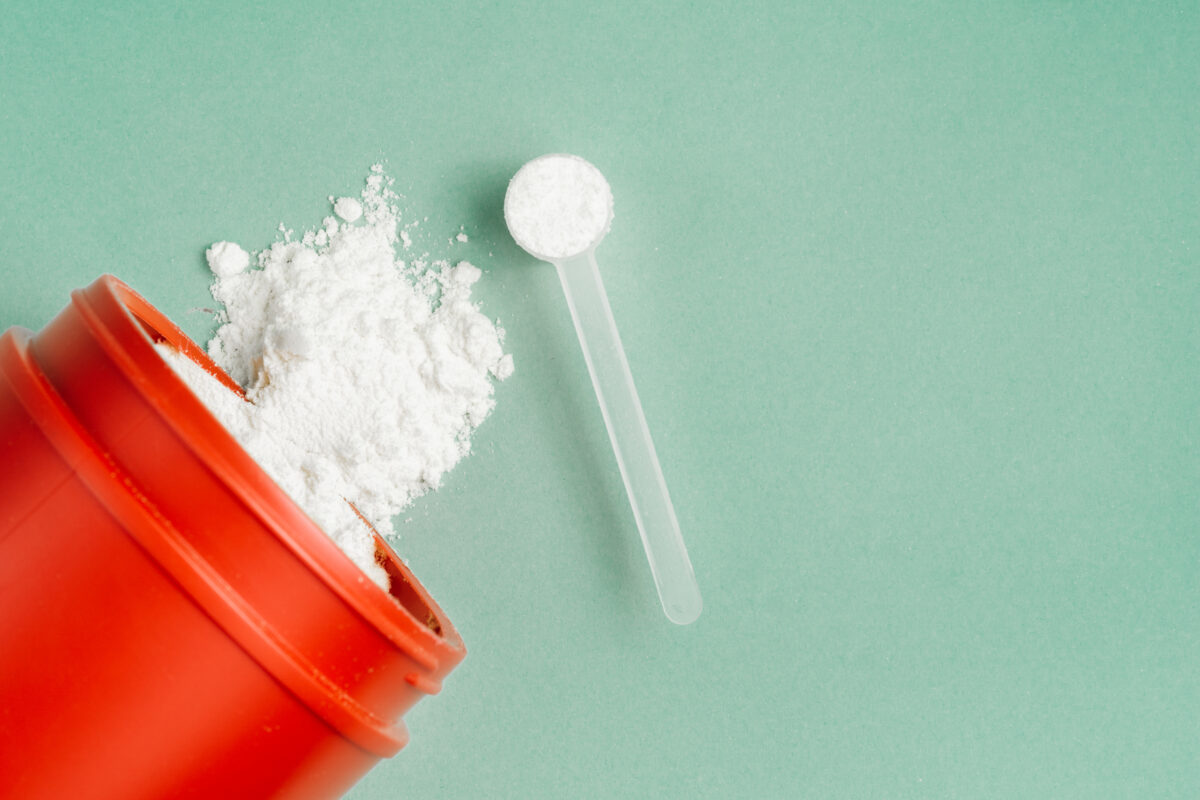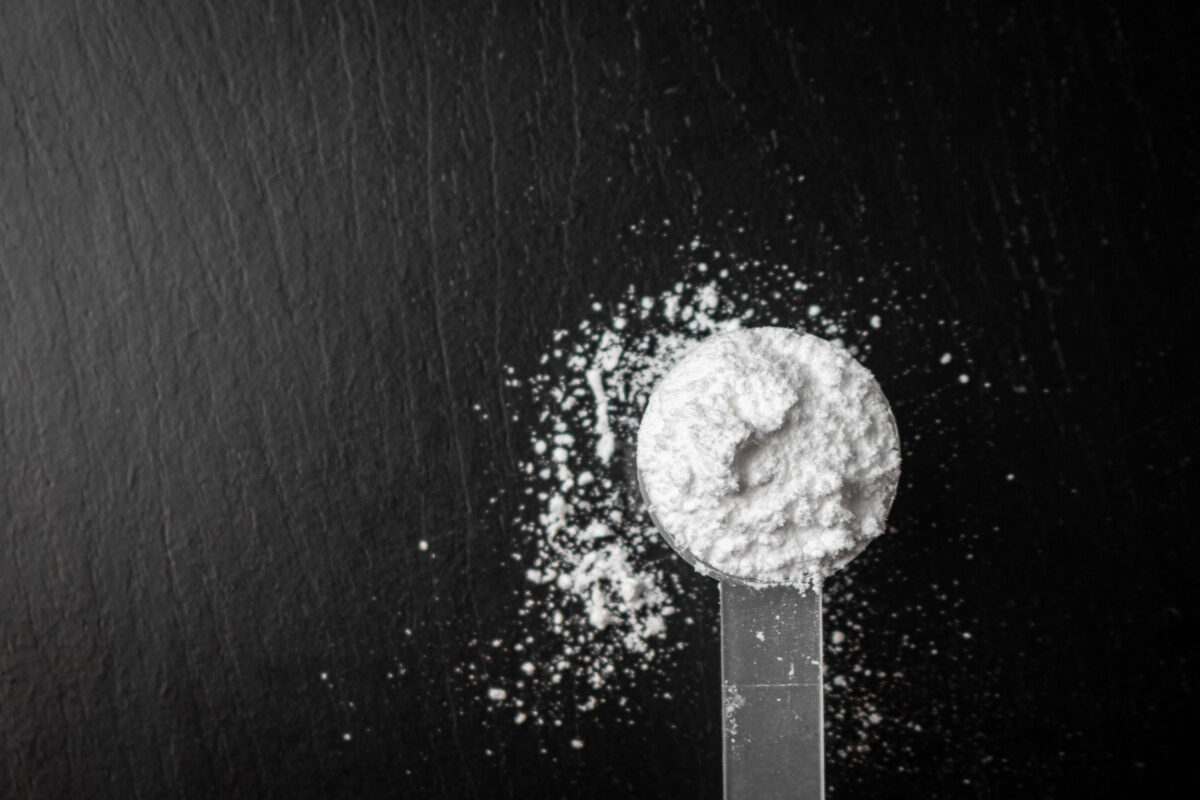Table of Contents
Introduction
If you’ve ever walked into a supplement store or browsed an online shop like Nutrabay, chances are you’ve seen creatine packs sitting on the top shelf. It’s not just hype; creatine is one of the most studied, effective, and safe sports supplements in the world. From professional athletes to casual gym-goers, people trust creatine for strength, muscle gain, and performance enhancement.
But here’s where confusion kicks in: should you choose Creatine Monohydrate, the time-tested classic, or try Creatine HCl, the newer variant marketed as more efficient and “bloat-free”?
While they both function, they are not the same. While HCl is becoming more and more well-liked due to its solubility and lower dosage requirements, monohydrate has decades of research supporting it.
We’ll learn how each kind of creatine functions in this blog, the actual variations in results, side effects, and absorption, and which kind is best for women, athletes, beginners, or those on a tight budget. Let this blog help and answer your confusion on creatine monohydrate vs creatine HCl clearly.
What is Creatine?

Let’s first examine creatine in general before contrasting the two. The three amino acids arginine, glycine, and methionine combine to form creatine. Your body stores it as phosphocreatine in your muscles and naturally makes it in the kidneys and liver.
What makes that significant? Because ATP (adenosine triphosphate), the molecule your body utilizes for energy during high-intensity sports like running, weightlifting, or HIIT, is regenerated by your muscles with the aid of phosphocreatine.
- Roughly 95% of your creatine is stored in skeletal muscle.
- Foods like red meat and fish provide creatine, but only in small amounts.
- Supplementing boosts creatine levels beyond diet alone.
In short: creatine supplementation provides more energy for explosive workouts, faster recovery, and better muscle growth.
What is Creatine Monohydrate?

The original and best studied type of creatine is creatine monohydrate. It has been tested in hundreds of researchers since the 1990s. Monohydrate research is the source of almost every performance or muscle-building advantage you’ve ever heard about creatine.
Benefits of Creatine Monohydrate
- Decades of evidence: Its efficacy has been demonstrated by more than 30 years of research.
- By increasing the amount of water in muscle cells and promoting protein synthesis, muscular development increases lean muscle mass.
- Performance: Improves power, strength, and recuperation.
- Economical: typically the least expensive kind of creatine.
- Safe: Thoroughly studied for extended use.
Drawbacks of Creatine Monohydrate
- Bloating and water retention: Because muscles store more water, some users feel swollen.
- Although uncommon, digestive discomfort might happen if you don’t drink enough water.
- Problems with solubility: If not micronized, it occasionally leaves residue at the bottom of a glass.
If you’re considering monohydrate, Nutrabay Pure Micronized Creatine Monohydrate is one of the best picks. The micronized form improves solubility, making it easier to mix and digest.
What is Creatine HCl?

A more recent type is creatine hydrochloride (HCl), which is creatine bonded to hydrochloride. Its solubility in water is greatly increased by this chemical modification, causing it to dissolve nearly immediately.
Advantages of Creatine HCl
- Better solubility: Mixes easily; leaves no gritty behind.
- Lower dosage: Just 1-3 g per day as compared to 3 g for monohydrate.
- Improved digestion, less discomfort or bloating concerns, and easier on the stomach.
- Without a loading phase: Effective at a constant low dosage.
Drawbacks of Creatine HCl
- Limited research: There are far fewer studies as compared to monohydrate.
- More expensive: They are higher in cost per gram.
- Unclear long-term safety: No evidence of its harm or side effects, but have limited clinical history.
Creatine Monohydrate vs Creatine HCl: A Complete Comparison

When people look for creatine monohydrate vs creatine HCl, they’re usually looking for clarity on which one will work better for their specific fitness goals. Let’s break down the comparison across all key parameters, science, performance, usability, and some real-world experiences.
1. Absorption & Solubility
- Creatine Monohydrate
Monohydrate has been around for decades and is effective, but it has one drawback, it isn’t that water-soluble. If you mix a standard 3g scoop in water, you’ll often see some residue at the bottom of the glass. This sometimes leads to minor digestive discomfort in individuals with sensitive stomachs. - Creatine HCl
The hydrochloride form binds creatine with hydrochloric acid, which dramatically increases water solubility. Users often report that it dissolves almost instantly in water, leaving no residue. This higher solubility is believed to contribute to improved absorption.
Verdict of Creatine monohydrate vs Creatine HCl: HCl wins for solubility and ease of mixing, but both deliver creatine effectively once they are absorbed.
2. Dosage & Dosing Convenience
- Creatine Monohydrate
The standard dose is 3g per day. Some athletes follow a “loading phase” of 20g daily for 5–7 days, though research shows it’s not essential, you can achieve full muscle saturation with consistent daily use over a few weeks. - Creatine HCl
Because of its higher solubility and concentration, HCl is often taken in smaller doses 2–3g daily is typical. Manufacturers argue that less is required because absorption is more efficient.
Verdict of Creatine monohydrate vs Creatine HCl: HCl requires a smaller daily dose, which can be convenient, but monohydrate’s 3g serving is still simple and highly effective.
3. Performance Benefits
- Creatine Monohydrate
This is backed by over 500+ studies, monohydrate is proven to increase ATP regeneration, boost high-intensity performance, enhance muscle growth, and aid recovery. - Creatine HCl
There are fewer studies that exist, but some reports and smaller trials suggest similar benefits in terms of strength and muscle gain. The difference is more about comfort and dosing rather than raw performance.
Verdict of Creatine monohydrate vs Creatine HCl: Both forms of creatine support performance, but monohydrate has decades of data behind it to support these claims.
4. Water Retention & Bloating
- Creatine Monohydrate
One common concern with creatine monohydrate is water retention, as it pulls water into the muscle cells, which is actually a positive for muscle fullness and protein synthesis. However, some people mistake this as “bloating.” - Creatine HCl
As HCl is more soluble, users report less water retention outside the muscle and fewer complaints of bloating. This makes it attractive for those cutting weight or wanting a leaner look.
Verdict of Creatine monohydrate vs Creatine HCl: Monohydrate increases water in muscle (beneficial), but HCl may feel lighter for those worried about bloating and other factors.
5. Digestive Comfort
- Creatine Monohydrate
A small number of users may experience stomach cramps or loose stools, often from using too much at once or not dissolving the product properly. Using micronized creatine monohydrate can solve much of this problem. - Creatine HCl
As it has higher solubility, HCl is easier to digest for most people, even for those who are sensitive to monohydrate, and can often tolerate the HCl form well.
Verdict of Creatine monohydrate vs Creatine HCl: HCl edges out for sensitive stomachs, but micronized monohydrate is an excellent middle ground.
6. Safety Profile
- Creatine Monohydrate
This is extensively researched and regarded as safe for long-term use. Studies show no harmful effects on kidneys, liver, or hydration status in healthy individuals. This has been recognized by ISSN (International Society of Sports Nutrition) as one of the safest and most effective supplements available. - Creatine HCl
This is considered safe as well, but lacks the same volume of long-term data. Early studies and user reports suggest no issues, but monohydrate still has the advantage of decades of proven safety.
Verdict of Creatine monohydrate vs Creatine HCl: Monohydrate has the strongest safety track record.
7. Cost & Availability
- Creatine Monohydrate
Monohydrate is the most affordable form which is widely available, and often sold in larger tubs at economical prices. - Creatine HCl
This one is generally more expensive due to processing and “premium” positioning. Available in smaller serving sizes or capsules, which increases cost per gram.
Verdict of Creatine monohydrate vs Creatine HCl: Monohydrate wins for cost-effectiveness.
8. Best Use Cases
- Creatine Monohydrate is best for
- Beginners looking for a well-research backed supplement
- Athletes focused on strength and size
- Budget-conscious users
- Long-term daily use with proven safety
- Creatine HCl is best for
- People prone to bloating or digestive issues
- Those cutting or in weight-class sports who want minimal water retention
- Users preferring smaller doses and faster mixing
- People who don’t mind paying extra for convenience
Verdict of Creatine monohydrate vs Creatine HCl: Both lead to similar long-term results; monohydrate just takes slightly longer if not loaded.
Conclusion
When it comes to creatine monohydrate vs creatine HCl benefits, the differences lie less in results and more in user experience.
- If you want a supplement which is backed by maximum research, has lowest cost, and guaranteed results, go with Creatine Monohydrate.
- If you value digestive comfort, want to have smaller doses, and a quick solubility, Creatine HCl may suit you better.
Either way, both forms of creatine are excellent for building muscle, improving strength, and supporting recovery.
So to answer your doubt of creatine monohydrate vs creatine HCl, the clear answer is that both of the forms work best. The only real question should be what fits your body and budget better, then only you can decide.
If you want to explore Creatine, whether monohydrate or HCl form, you can explore the wide range of supplements on the Nutrabay website for 100% genuine and original products.
Frequently Asked Questions (FAQs)
Is creatine HCl better than monohydrate?
Not better, they are just different. HCl is more soluble, but the monohydrate form has stronger research.
Does creatine monohydrate cause bloating?
It might cause mild water retention in muscles, which isn’t harmful, this is because of its key feature of holding water in the muscles to give them a fuller look.
Which is safer: creatine monohydrate vs creatine HCl?
Both of these creatine forms are safe, but monohydrate has more long-term studies backing it.
Can women take creatine?
Yes! Creatine supports lean muscle and energy in women. Many people prefer HCl form for reduced bloating.
Should I load creatine HCl?
No, Creatine HCl works without a loading phase too, at the standard dose of 2-3g only.
Which creatine is best for bodybuilding?
Creatine monohydrate remains the top choice for athletes and bodybuilders for bulking and strength.
Can creatine help in weight loss?
Yes, as Creatine helps preserve lean muscle while one is cutting on calories, so eventually it can help in a healthy weight loss.
Is creatine safe for seniors?
Yes, as it helps preserve muscle mass and strength in ageing adults. However, if you have any medical condition, consult a healthcare professional first.
Can I take creatine with protein shakes?
Absolutely, combining creatine with protein powders help improve muscle recovery and provide strength alongside.

